Insights into the Stability of Mixed Convective Darcy–Forchheimer Flows of Cross Liquids from a Vertical Plate with Consideration of the Significant Impact of Velocity and Thermal Slip Conditions
Abstract
:1. Introduction
2. Formulation of the Problem
3. Skin Friction and Nusselt Number
4. Numerical Procedure
5. Physical Explanation
6. Deviation of the Skin Coefficient and the Local Nusselt Number
7. Deviation of the Velocity and Temperature Fields
8. Closing Remarks
- Permeability parameter decelerates the drag force, as well as the rate of heat transfer in both forms of solutions;
- Due to the porosity parameter, the drag force slows down in upper and lower branch solutions, while the rate of heat transfer accelerates;
- The drag forces decline with the growing values of the Weissenberg parameter in the upper branch solutions, while a reverse trend is observed in the lower branch solutions. However, the rate of heat transfer is diminished with the Weissenberg parameter;
- The drag forces are declined initially and then enhance due to the inertia coefficient, while the rate of heat transfer increases in both solutions;
- Liquid velocity increases due to in both solutions, while the temperature distribution behaves in a contrary direction;
- The temperature of the liquid is decreased due to in the upper branch solutions and augmented in the lower branch solutions. The repeal tendency is scrutinized for the velocity;
- The velocity of the liquid has an enhancing behavior with the increasing values of in both solutions, while the temperature is a declining function of ;
- The power-law index accelerates the velocity and reduces the temperature of the liquid in both solutions.
Author Contributions
Funding
Conflicts of Interest
Nomenclature
| A1 | the first tensor of Rivlin–Ericksen |
| (b, c) | positive constants |
| inertia coefficient | |
| drag coefficient | |
| skin friction coefficient | |
| gravity acceleration | |
| Grashof number | |
| the identity vector | |
| thermal conductivity of fluid | |
| porous medium permeability | |
| dimensionless permeability | |
| length of slip | |
| power-law index | |
| Nusselt number | |
| the pressure | |
| the Peclet number | |
| the heat flux | |
| the Rayleigh number | |
| local Reynolds number | |
| proportionality constant | |
| temperature (K) | |
| free-stream temperature (K) | |
| wall temperature (K) | |
| free-stream velocity (m s−1) | |
| velocity components (m s−1) | |
| Weissenberg number | |
| Cartesian coordinates (m) |
Greek Symbols
| thermal diffusivity | |
| thermal expansion | |
| modified porosity | |
| the rate of shear | |
| velocity slip | |
| thermal slip | |
| time constant | |
| mixed convective parameter | |
| zero shear rate | |
| infinite shear rate | |
| the effective (or “apparent”) viscosity | |
| dimensionless temperature | |
| effective kinematic viscosity | |
| density | |
| stream function | |
| the shear stress | |
| similarity variable |
Subscripts
| wall boundary condition | |
| free-stream condition |
Superscripts
| ’ | derivative w.r.t. |
References
- Cross, M.M. Rheology of non-Newtonian fluids: A new flow equation for pseudoplastic systems. J. Colloid Sci. 1965, 20, 417–437. [Google Scholar] [CrossRef]
- Khan, M.; Manzur, M.; Rahman, M.U. Boundary layer flow and heat transfer of Cross fluid over a stretching sheet. arXiv 2016, arXiv:1609.01855. [Google Scholar] [CrossRef] [Green Version]
- Hayat, T.; Khan, M.I.; Tamoor, M.; Waqas, M.; Alsaedi, A. Numerical simulation of heat transfer in MHD stagnation point flow of Cross fluid model towards a stretched surface. Results Phys. 2017, 7, 1824–1827. [Google Scholar] [CrossRef]
- Khan, M.; Manzur, M.; Rahman, M.U. On axisymmetric flow and heat transfer of Cross fluid over a radially stretching sheet. Results Phys. 2017, 7, 3767–3772. [Google Scholar] [CrossRef]
- Ijaz Khan, M.; Waqas, M.; Hayat, T.; Alsaedi, A. Magneto-hydrodynamical numerical simulation of heat transfer in MHD stagnation point flow of Cross fluid model towards a stretched surface. Phys. Chem. Liq. 2018, 56, 584–595. [Google Scholar] [CrossRef]
- Ijaz Khan, M.; Hayat, T.; Khan, M.I.; Alsaedi, A. Activation energy impact in nonlinear radiative stagnation point flow of Cross nanofluid. Int. Commun. Heat Mass Transf. 2018, 91, 216–224. [Google Scholar] [CrossRef]
- Azam, M.; Shakoor, A.; Rasool, H.F.; Khan, M. Numerical simulation for solar energy aspects on unsteady convective flow of MHD Cross nanofluid: A revised approach. Int. J. Heat Mass Transf. 2019, 131, 495–505. [Google Scholar] [CrossRef]
- Bejan, A.; Dincer, I.; Lorente, S.; Miguel, A.F.; Reis, A.H. Porous and Complex Flow Structures in Modern Technologies; Springer: New York, NY, USA, 2004. [Google Scholar]
- Vafai, K. Handbook of Porous Media, 2nd ed.; Taylor & Francis: New York, NY, USA, 2005. [Google Scholar]
- Vadasz, P. Emerging Topics in Heat and Mass Transfer in Porous Media; Springer: New York, NY, USA, 2008. [Google Scholar]
- Spivey, J.; Brown, K.; Sawyer, W.; Frantz, J.H. Estimating non-Darcy flow coefficient from buildup-test data with wellbore storage. SPE Reserv. Eval. Eng. 2004, 7, 256–269. [Google Scholar] [CrossRef]
- Schafer, P.; Lohnert, G. Boiling experiments for the validation of dry out models used in reactor safety. Nucl. Eng. Des. 2006, 236, 1511–1519. [Google Scholar] [CrossRef]
- Vafai, K. Porous Media: Applications in Biological Systems and Biotechnology; CRC Press: Boca Raton, FL, USA, 2010. [Google Scholar]
- Wu, Y.S.; Lai, B.; Miskimins, J.L.; Fakcharoenphol, P.; Yuan, D. Analysis of multiphase non-Darcy flow in porous media. Transp. Porous Med. 2011, 88, 205–223. [Google Scholar] [CrossRef]
- Forchheimer, P. Wasserbewegung durch boden. Z. Ver. Dtsch. Ing. 1901, 45, 1782–1788. [Google Scholar]
- Rashidi, S.; Dehghan, M.; Ellahi, R.; Riaz, M.; Jamal-Abad, M.T. Study of stream wise transverse magnetic fluid flow with heat transfer around an obstacle embedded in a porous medium. J. Magn. Magn. Mater. 2015, 378, 128–137. [Google Scholar] [CrossRef]
- Hayat, T.; Muhammad, T.; Al-Mezal, S.; Liao, S.J. Darcy-Forchheimer flow with variable thermal conductivity and Cattaneo-Christov heat flux. Int. J. Numer. Methods Heat Fluid Flow 2016, 26, 2355–2369. [Google Scholar] [CrossRef]
- Hayat, T.; Haider, F.; Muhammad, T.; Alsaedi, A. On Darcy-Forchheimer flow of viscoelastic nanofluids: A comparative study. J. Mol. Liq. 2017, 233, 278–287. [Google Scholar] [CrossRef]
- Kang, Z.; Zhao, D.; Rui, H. Block-centered finite difference methods for general Darcy–Forchheimer problems. Appl. Math Comput. 2017, 307, 124–140. [Google Scholar] [CrossRef]
- Hayat, T.; Saif, R.S.; Ellahi, R.; Muhammad, T.; Ahmad, B. Numerical study for Darcy-Forchheimer flow due to a curved stretching surface with Cattaneo-Christov heat flux and homogeneous-heterogeneous reactions. Results Phys. 2017, 7, 2886–2892. [Google Scholar] [CrossRef]
- Rasool, G.; Shafiq, A.; Khalique, C.M.; Zhang, T. Magneto-hydrodynamic Darcy-Forchheimer nanofluid flow over nonlinear stretching sheet. Phys. Scr. 2019. [Google Scholar] [CrossRef]
- Rosali, H.; Ishak, A.; Pop, I. Mixed convection stagnation-point flow over a vertical plate with prescribed heat flux embedded in a porous medium: Brinkman-extended Darcy formulation. Trans. Porous Media 2011, 90, 709–719. [Google Scholar] [CrossRef]
- Faraz, N.; Khan, Y.; Anjum, A.; Kahshan, M. Three-Dimensional hydro-magnetic flow arising in a long porous slider and a circular porous slider with velocity slip. Mathematics 2019, 7, 748. [Google Scholar] [CrossRef] [Green Version]
- Jamalabadi, M.Y.A. Optimal design of isothermal sloshing vessels by entropy generation minimization method. Mathematics 2019, 7, 380. [Google Scholar] [CrossRef] [Green Version]
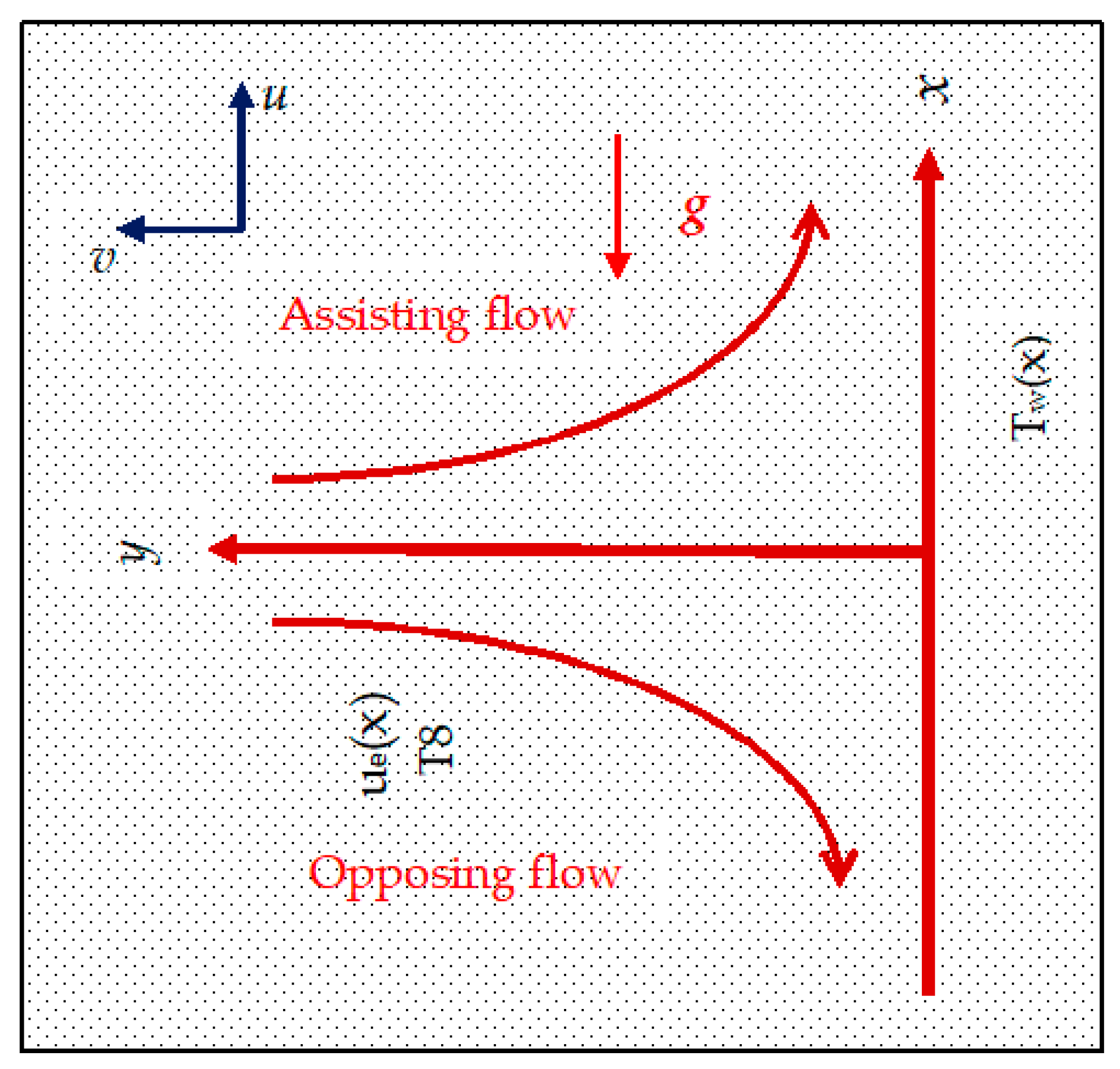
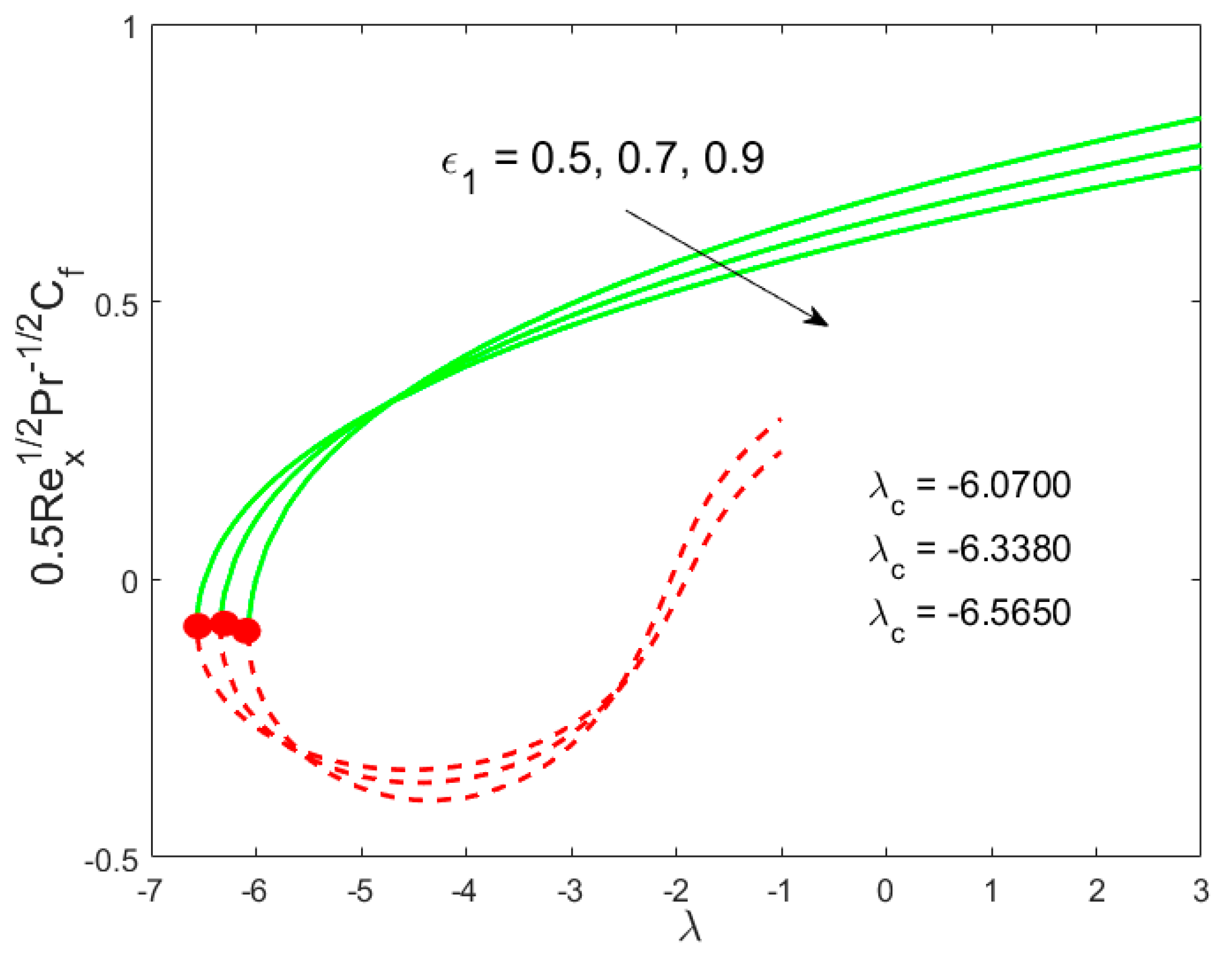

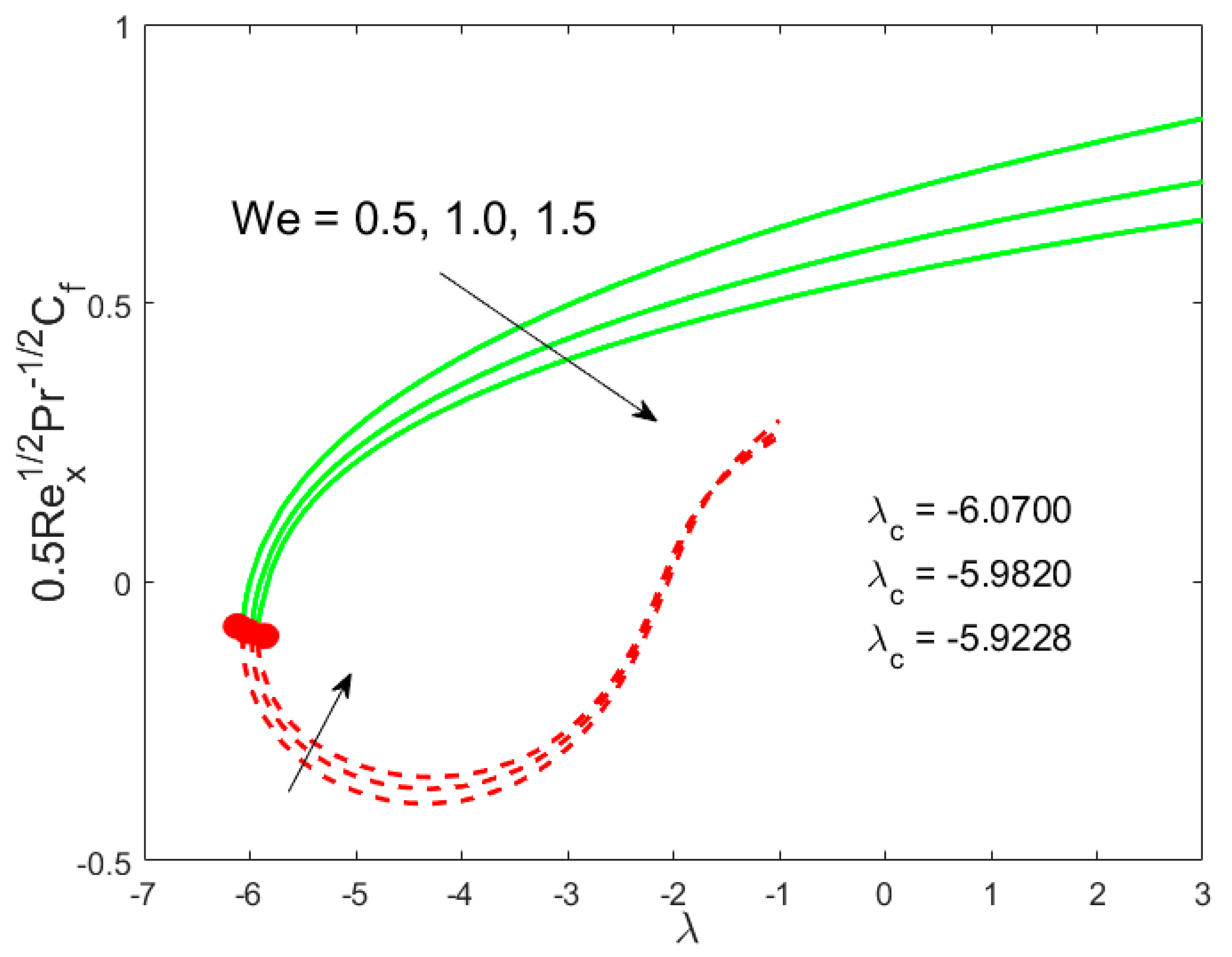
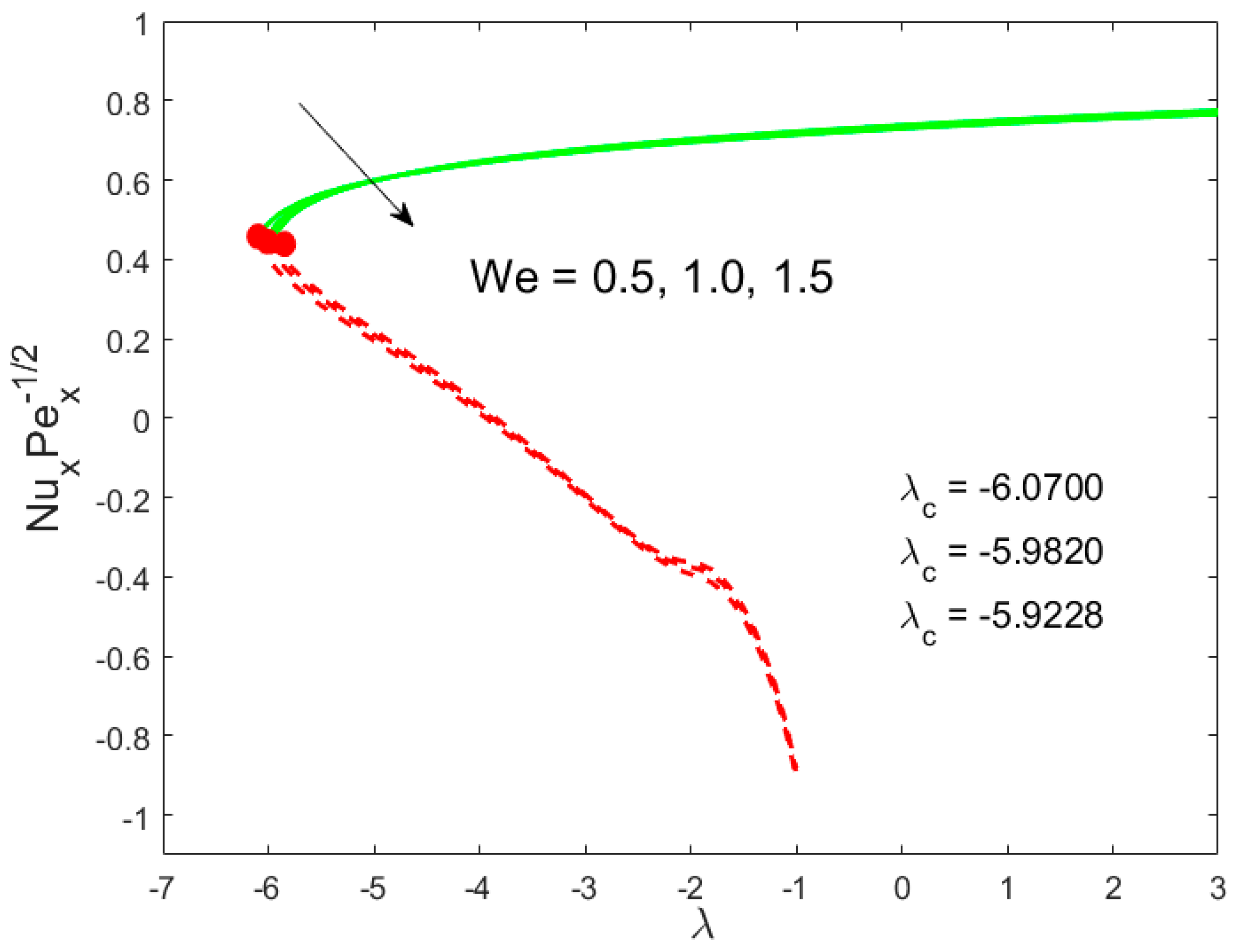

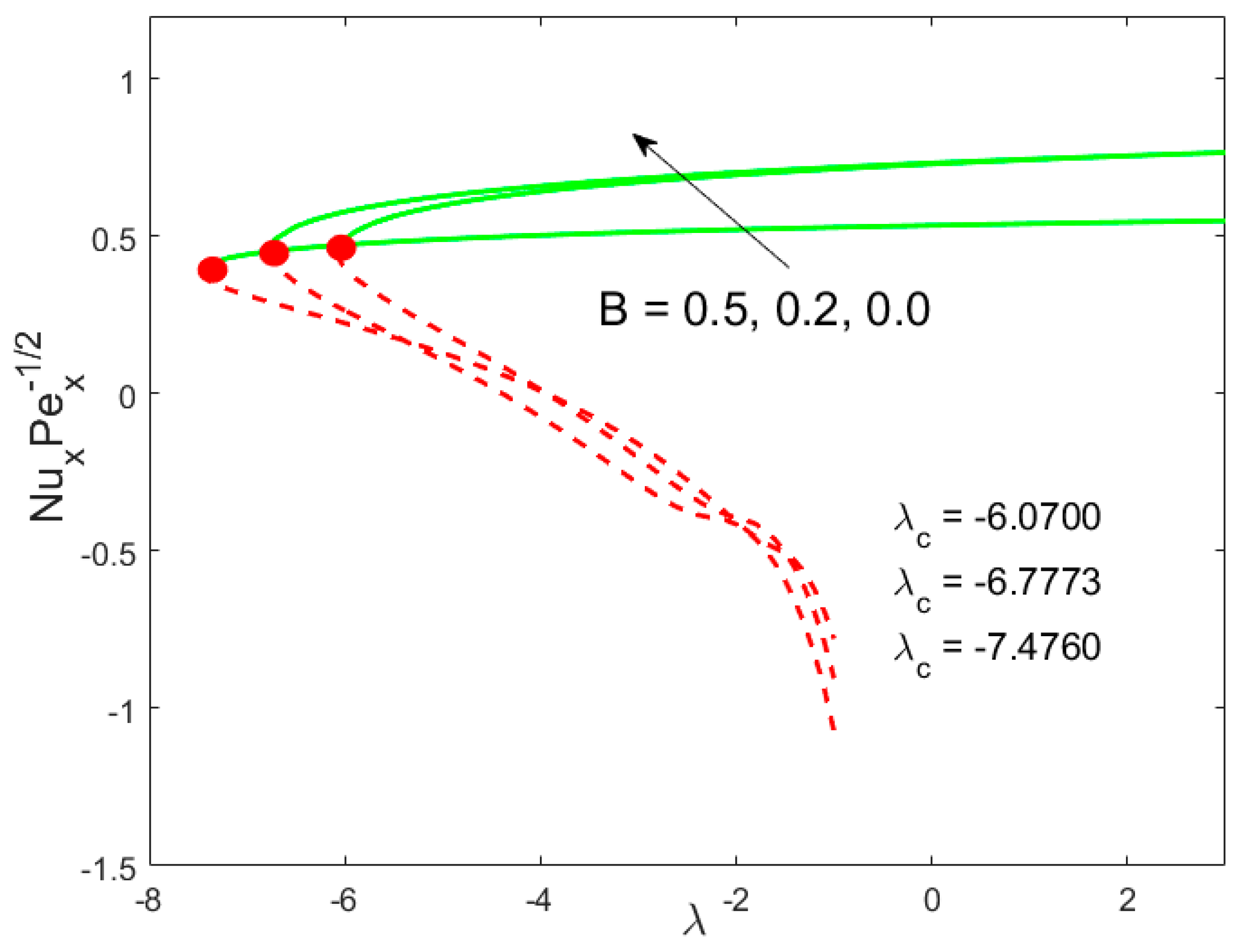
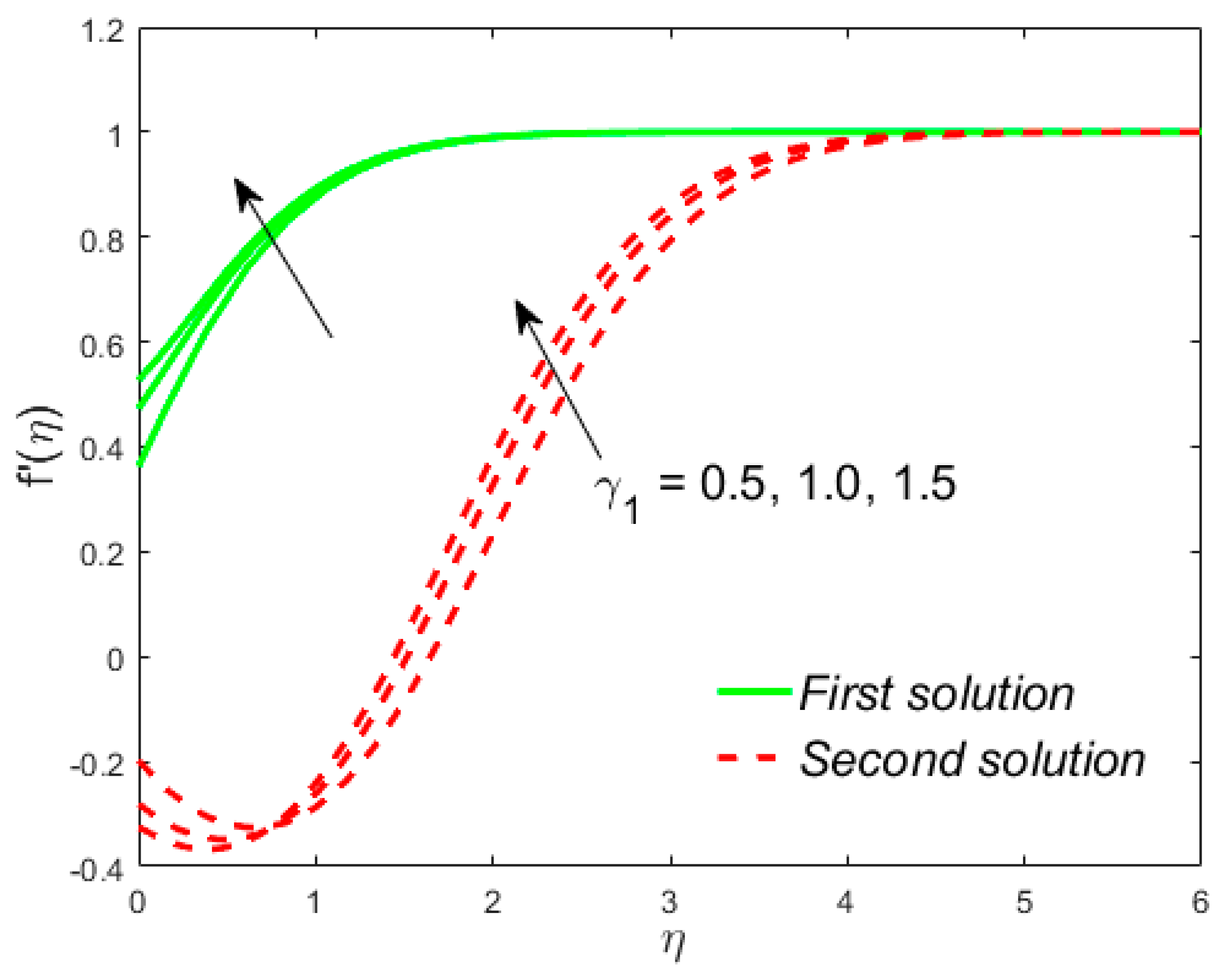

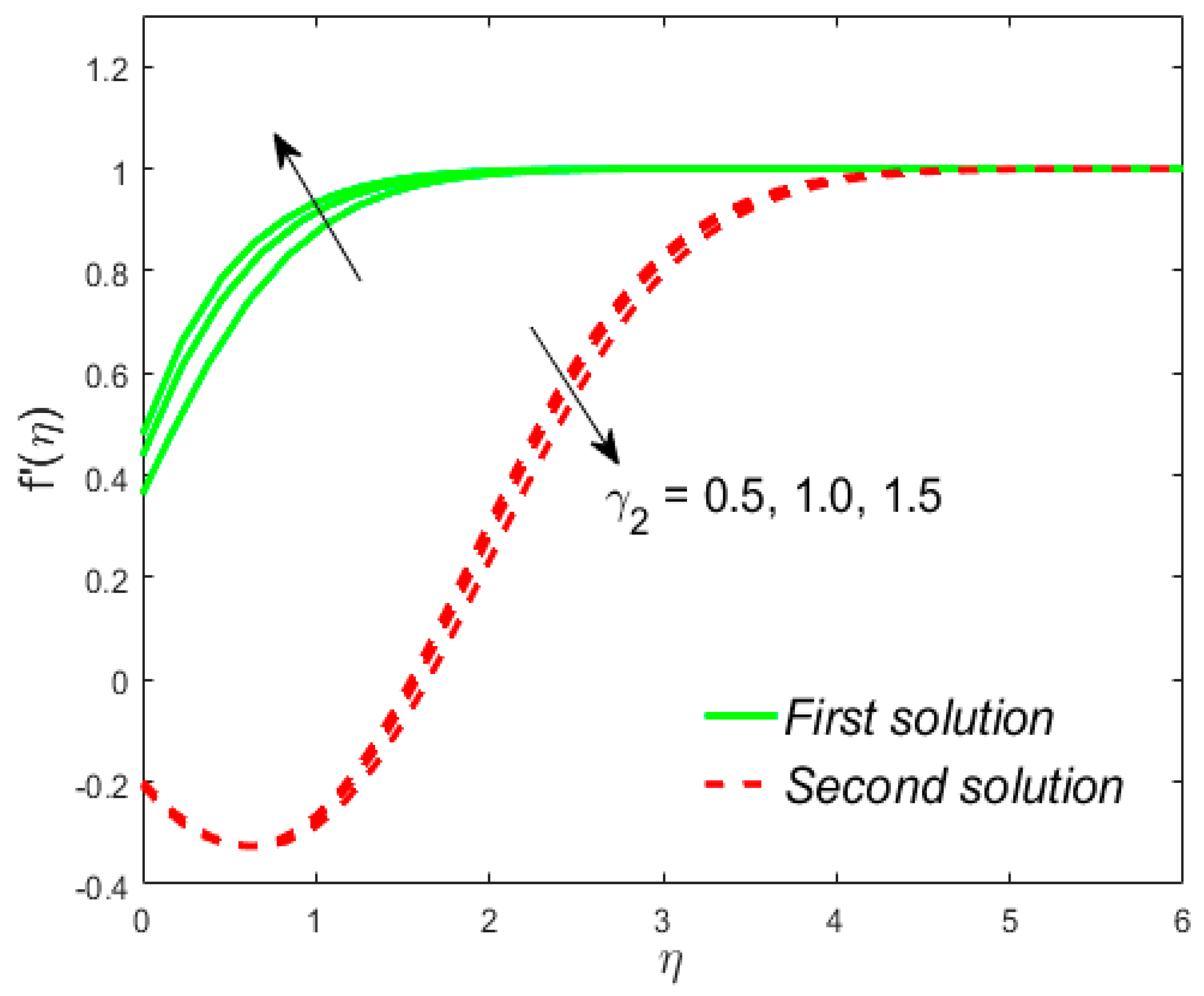
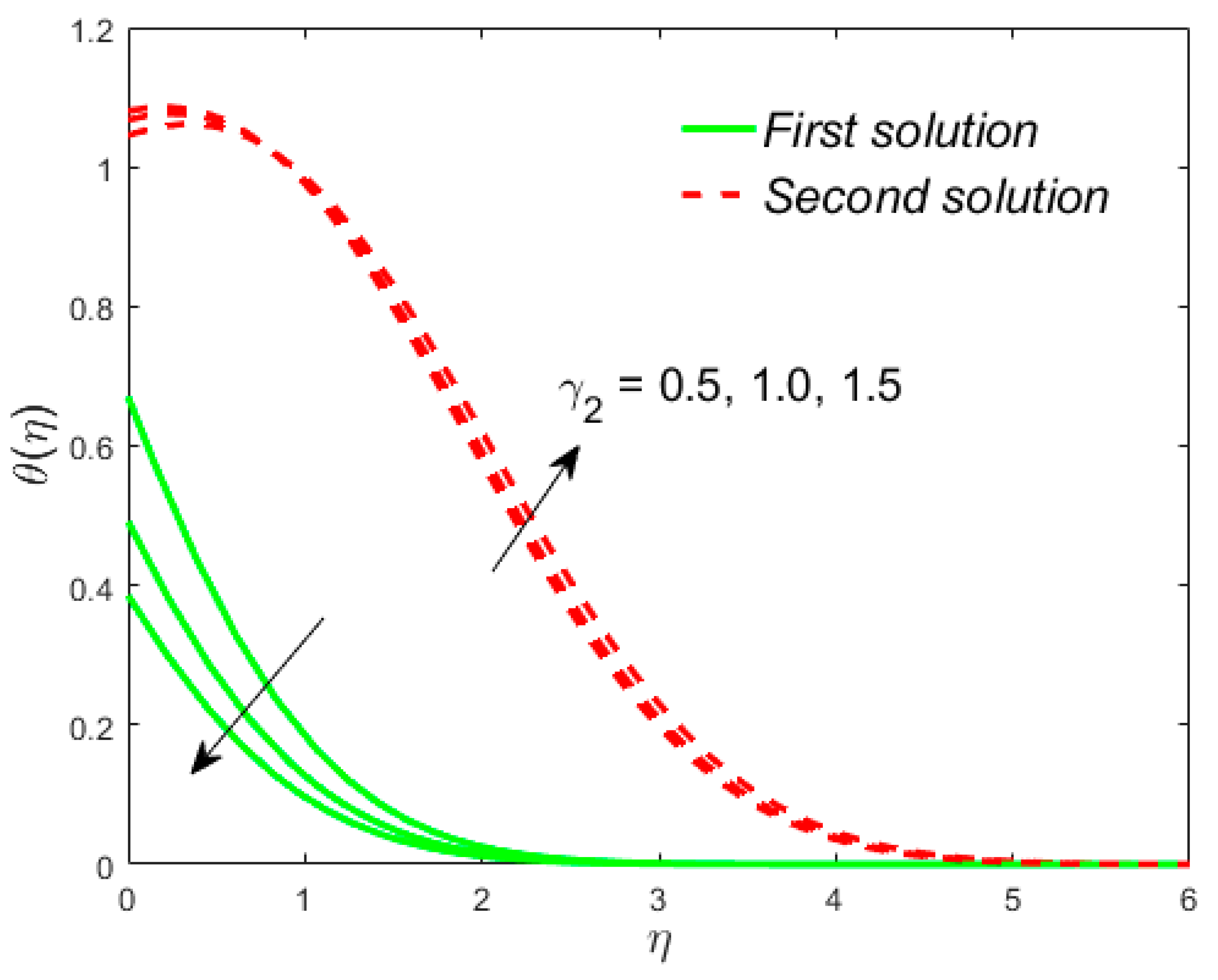
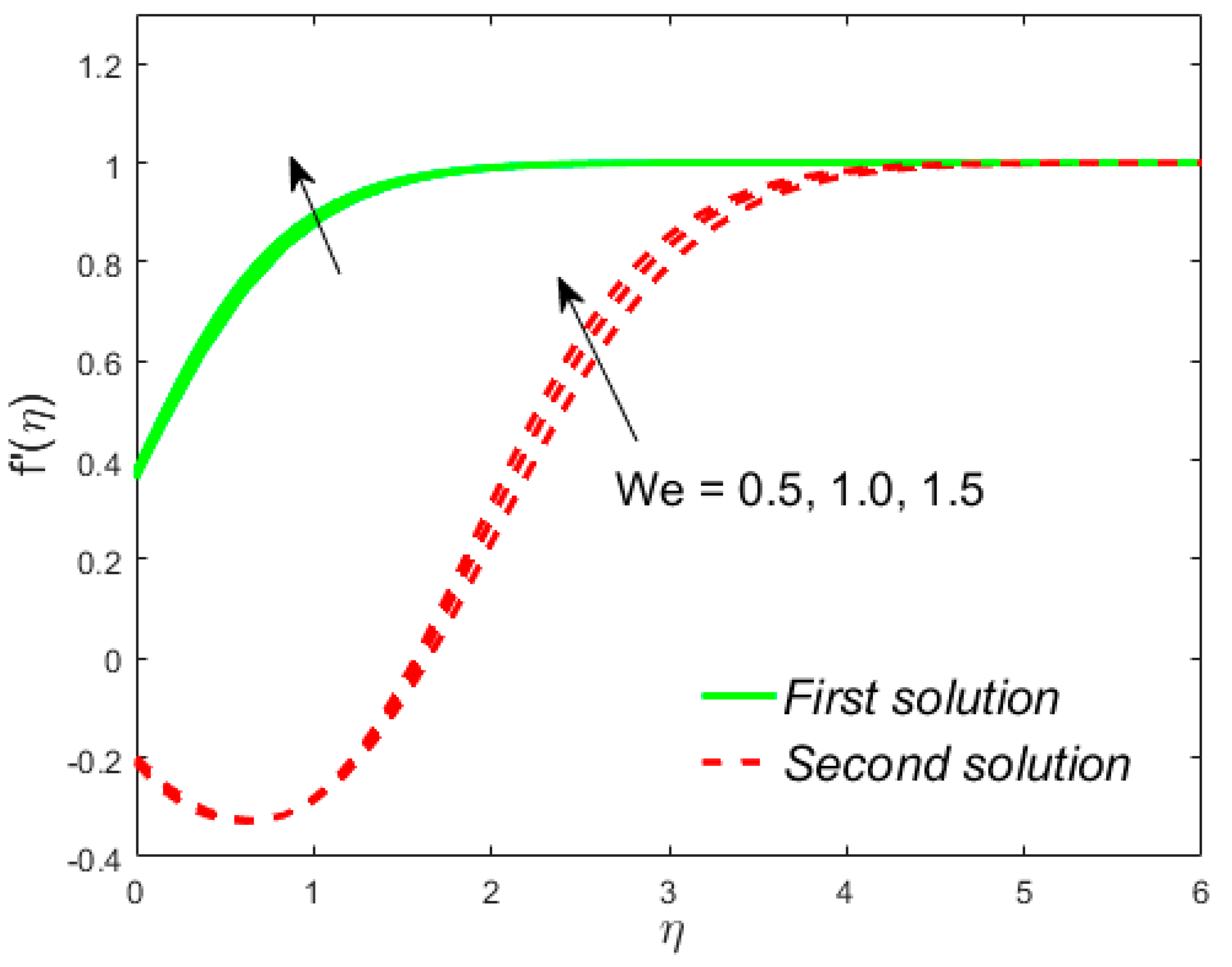
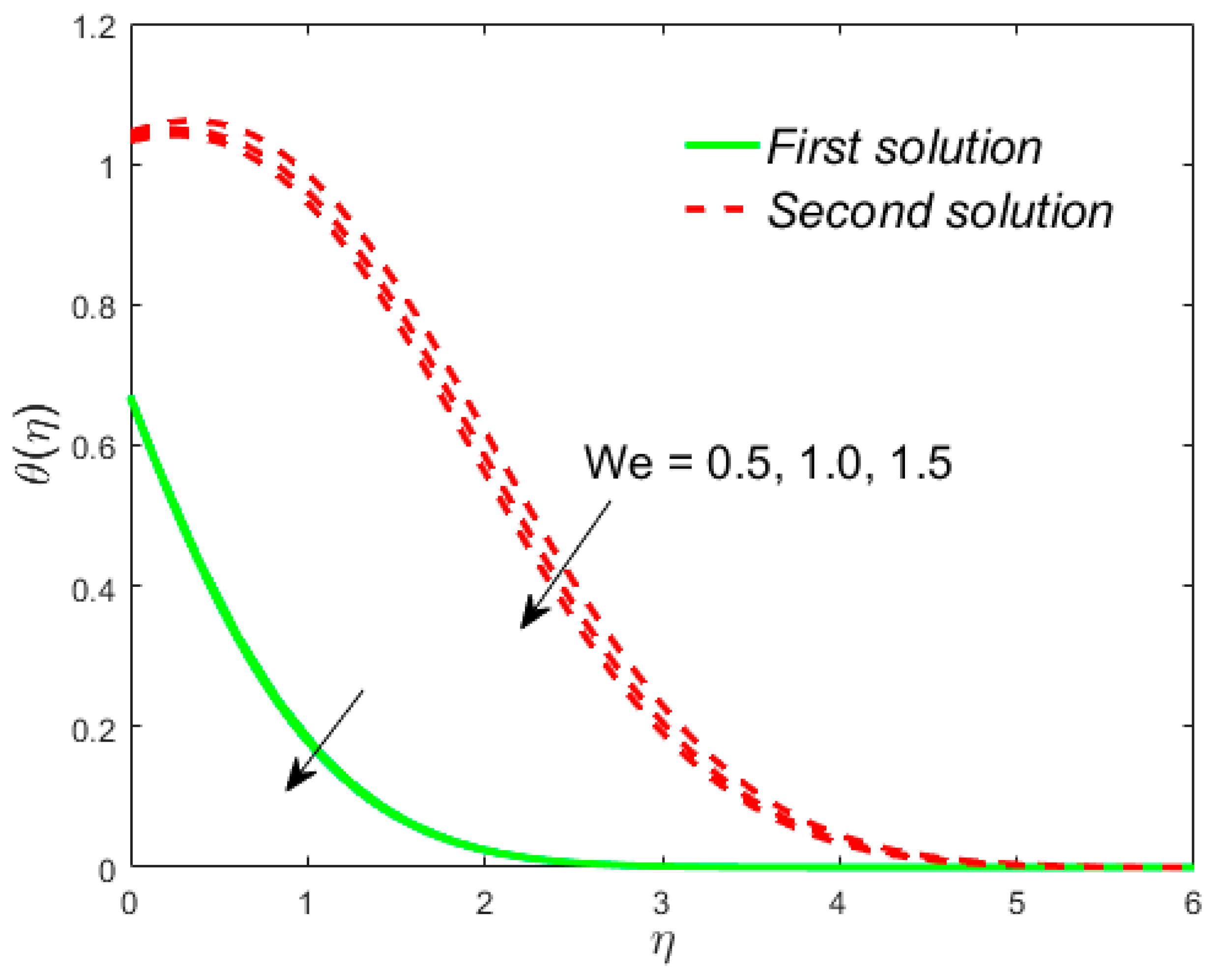
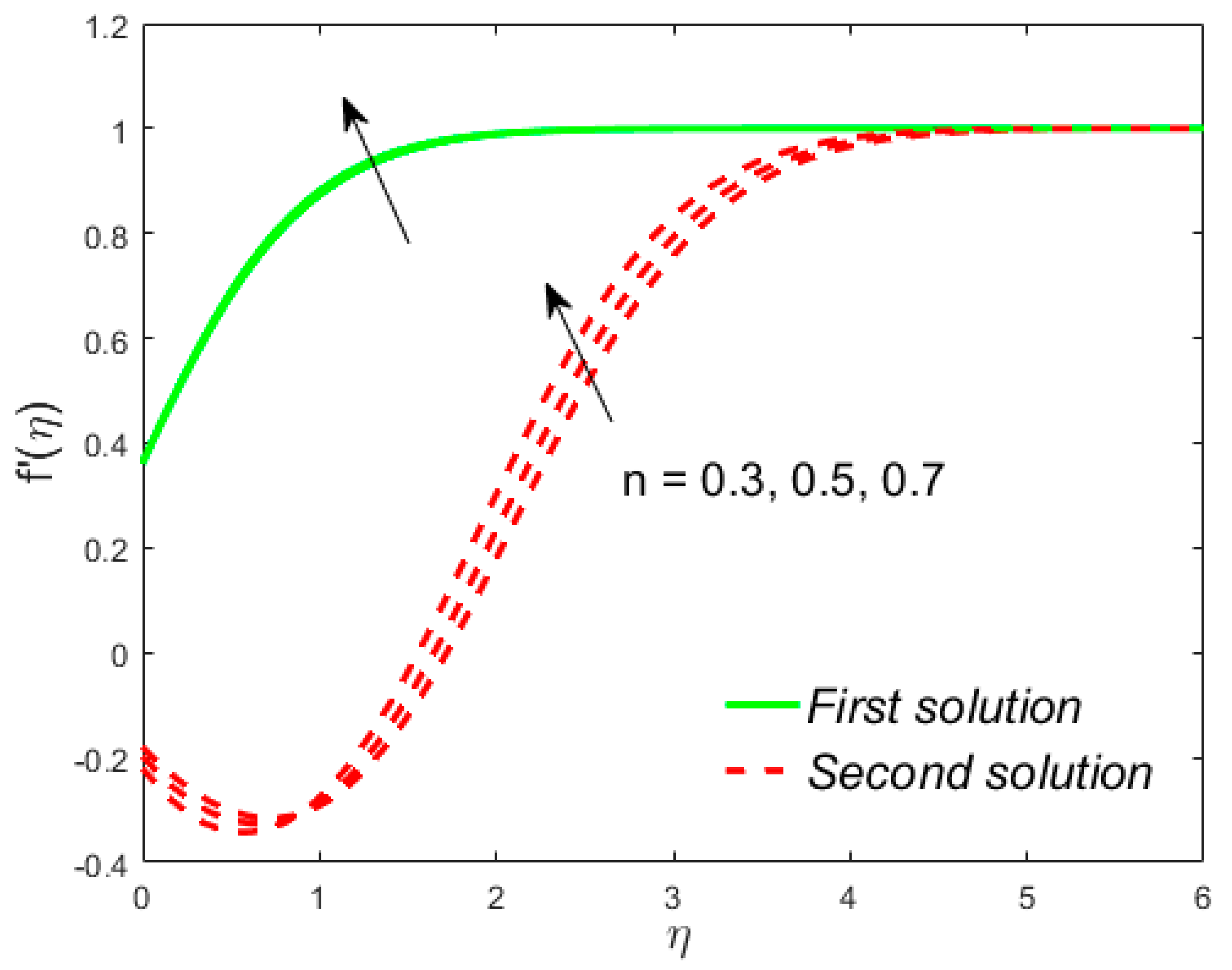


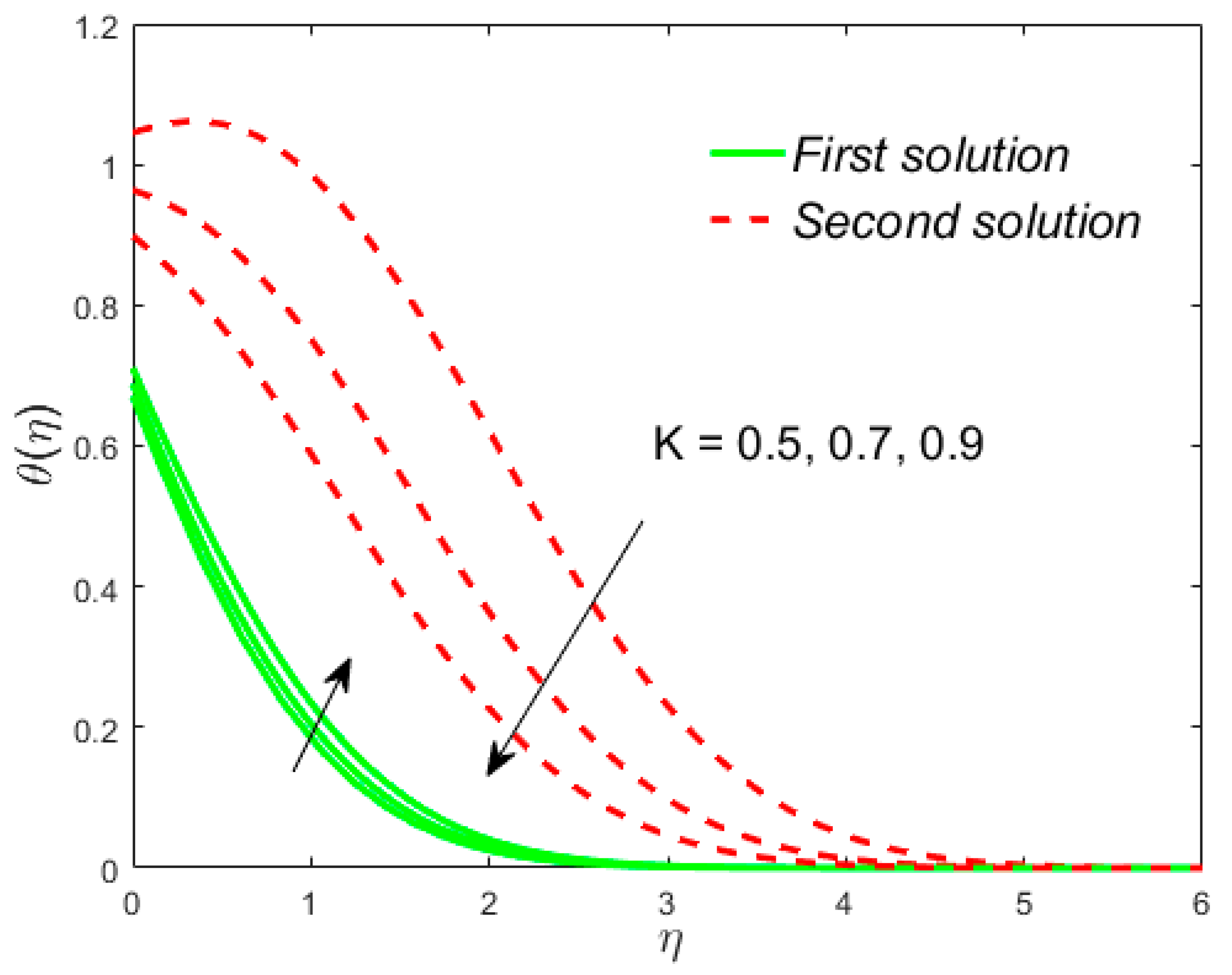
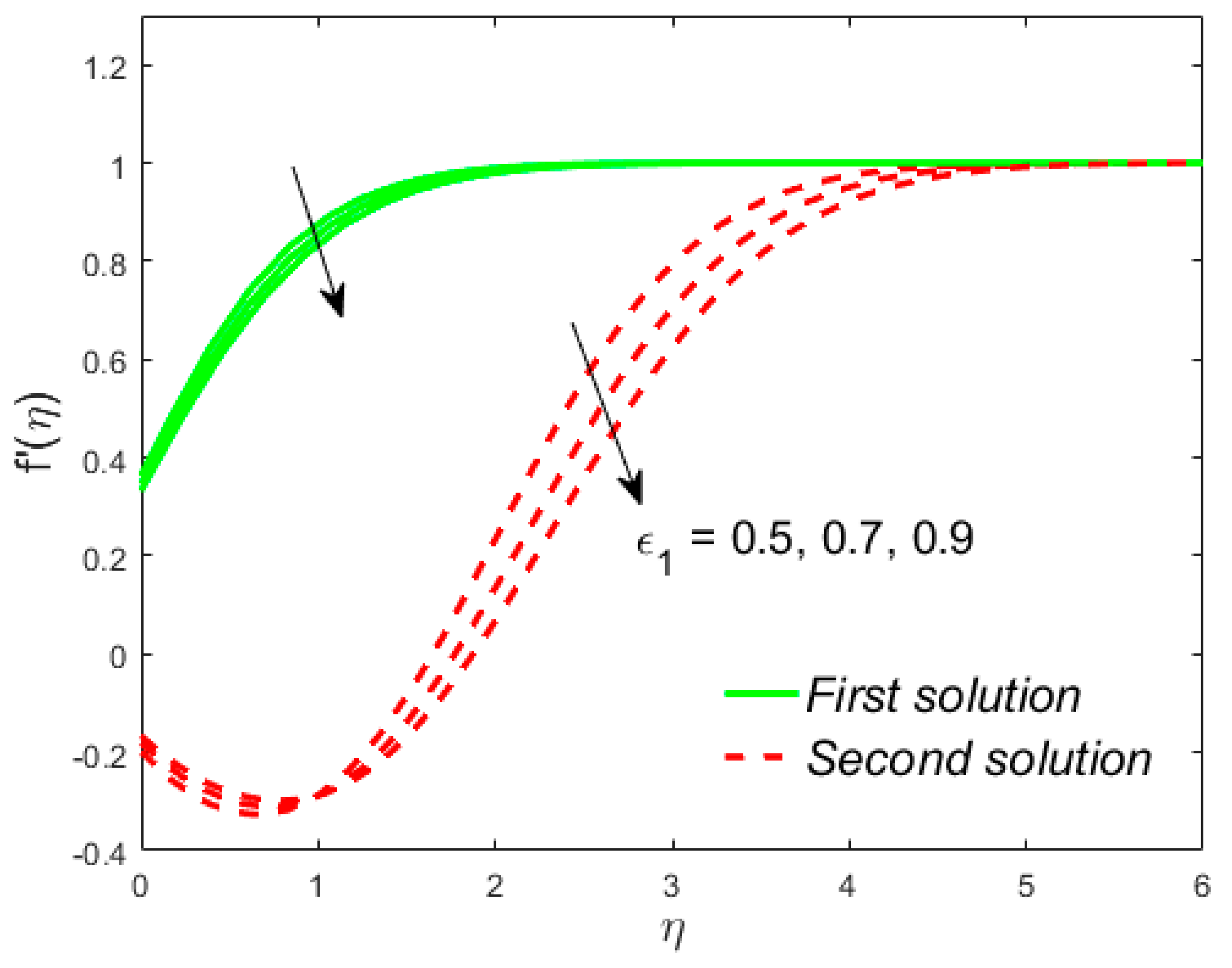
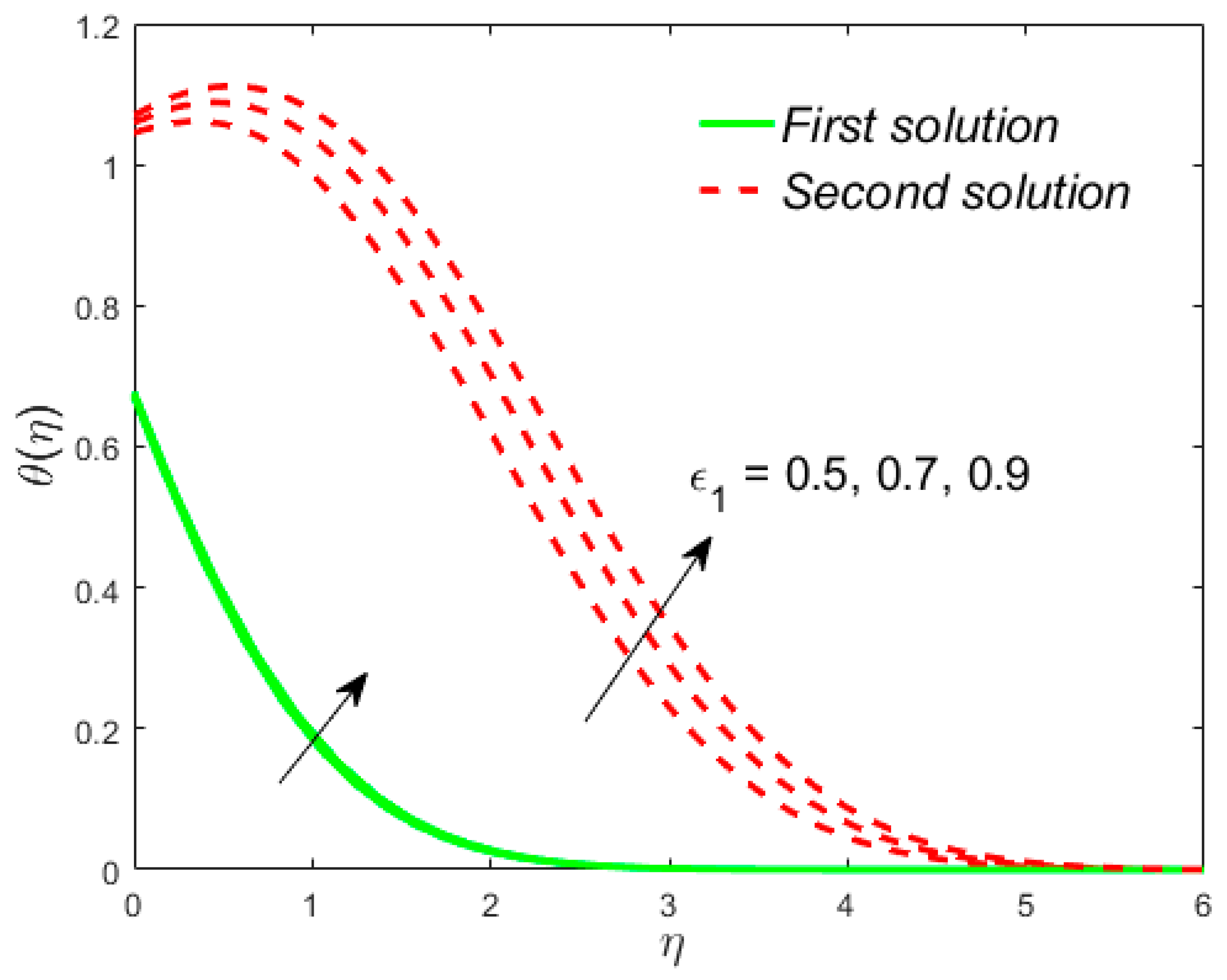

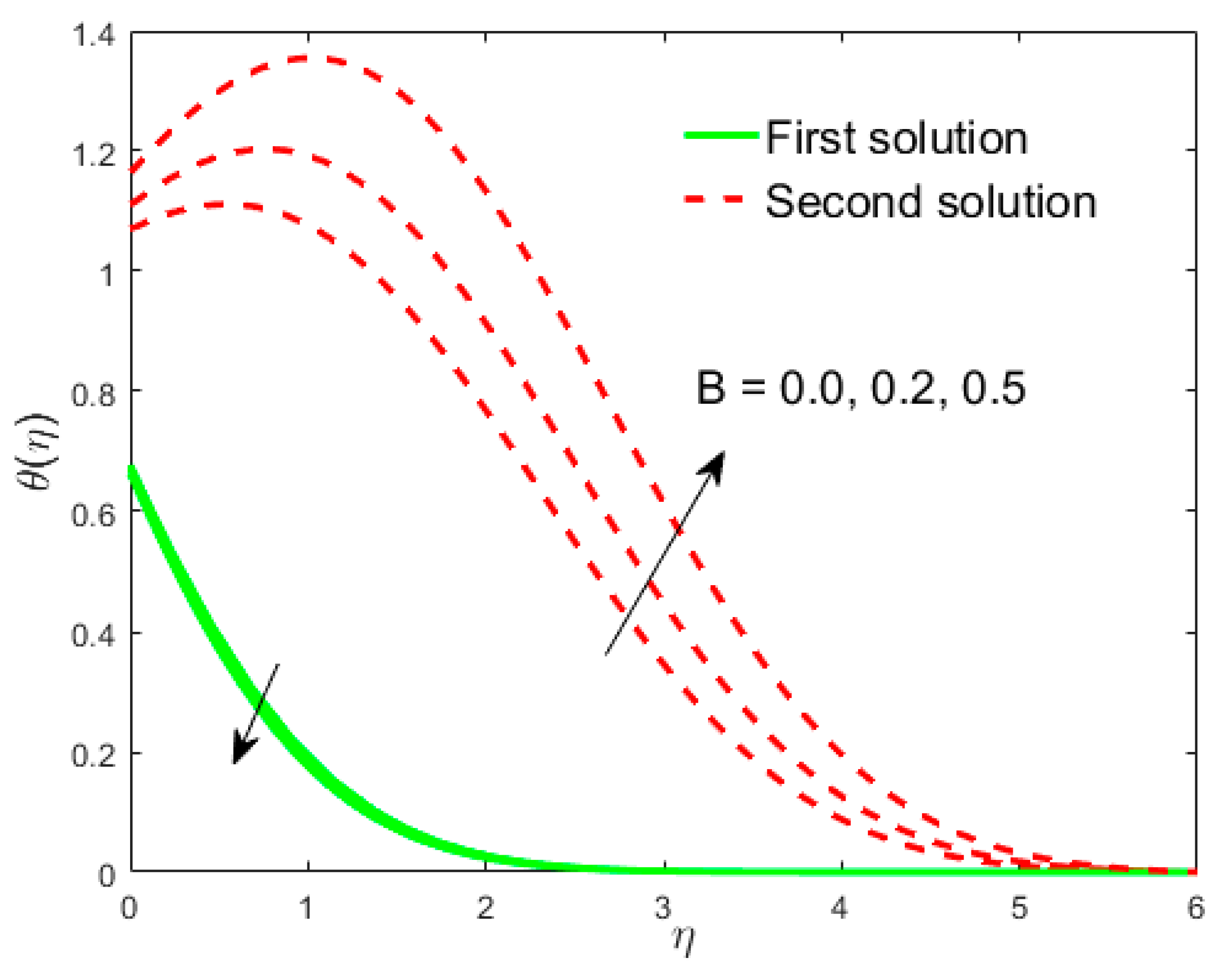
| Rosali et al. [22] | Present Results | ||
|---|---|---|---|
| 0.1 | −0.5 | 4.1508 | 4.1389 |
| 1 | 6.4874 | 6.4864 | |
| 2 | 7.7611 | 7.7614 | |
| 0.5 | −0.5 | 1.8821 | 1.8838 |
| 1 | 2.8597 | 2.8453 | |
| 2 | 3.3944 | 3.3944 | |
| 0.7 | −0.5 | 1.5967 | 1.6008 |
| 1 | 2.4074 | 2.4124 | |
| 2 | 2.8514 | 2.8499 | |
| 1 | −0.5 | 1.3418 | 1.3438 |
| 1 | 2.0050 | 2.0050 | |
| 2 | 2.3690 | 2.3620 |
© 2019 by the authors. Licensee MDPI, Basel, Switzerland. This article is an open access article distributed under the terms and conditions of the Creative Commons Attribution (CC BY) license (http://creativecommons.org/licenses/by/4.0/).
Share and Cite
Khan, U.; Zaib, A.; Khan, I.; Nisar, K.S.; Baleanu, D. Insights into the Stability of Mixed Convective Darcy–Forchheimer Flows of Cross Liquids from a Vertical Plate with Consideration of the Significant Impact of Velocity and Thermal Slip Conditions. Mathematics 2020, 8, 31. https://doi.org/10.3390/math8010031
Khan U, Zaib A, Khan I, Nisar KS, Baleanu D. Insights into the Stability of Mixed Convective Darcy–Forchheimer Flows of Cross Liquids from a Vertical Plate with Consideration of the Significant Impact of Velocity and Thermal Slip Conditions. Mathematics. 2020; 8(1):31. https://doi.org/10.3390/math8010031
Chicago/Turabian StyleKhan, Umair, Aurang Zaib, Ilyas Khan, Kottakkaran Sooppy Nisar, and Dumitru Baleanu. 2020. "Insights into the Stability of Mixed Convective Darcy–Forchheimer Flows of Cross Liquids from a Vertical Plate with Consideration of the Significant Impact of Velocity and Thermal Slip Conditions" Mathematics 8, no. 1: 31. https://doi.org/10.3390/math8010031






